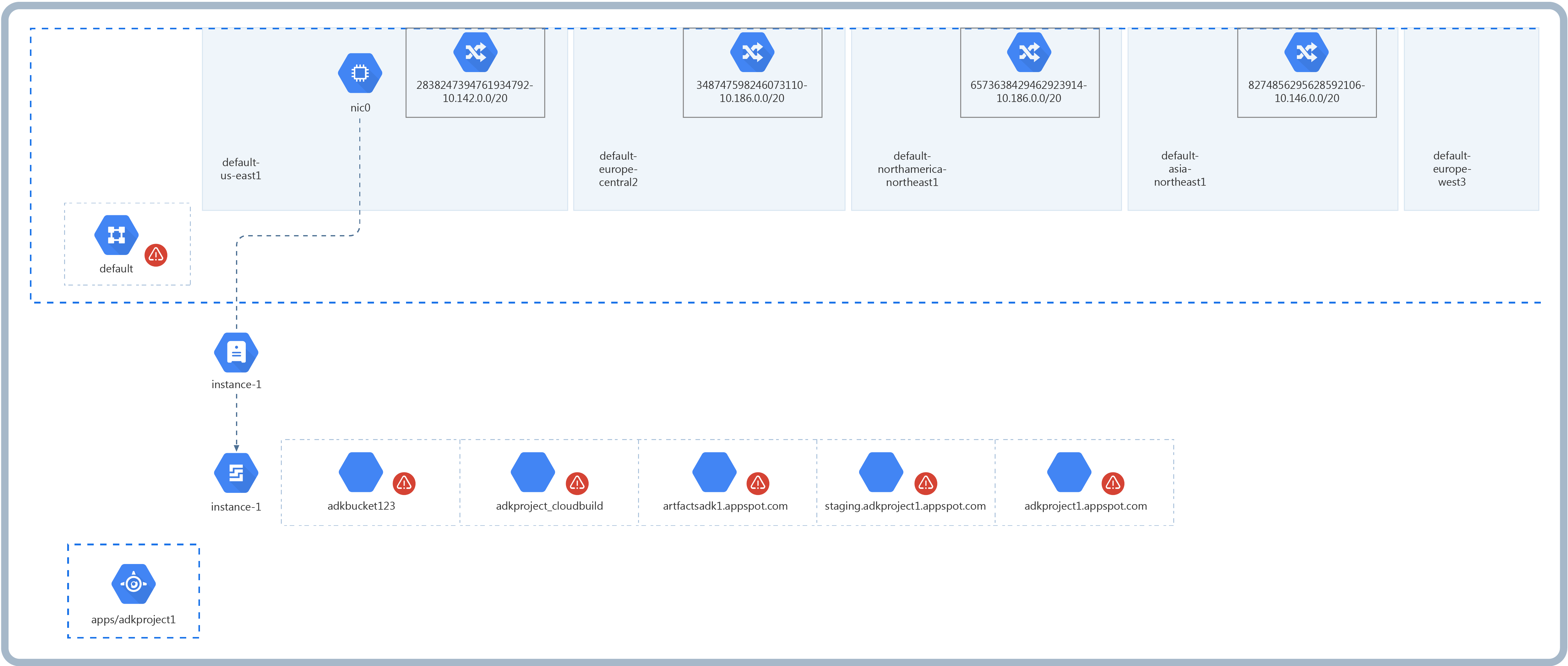Your GCP Architecture Diagrams Explained
Whether you use Google Cloud as your primary cloud or as a multi-cloud strategy, documenting your Google Cloud architecture is an important task. There are 2 options to build your GCP diagrams, either by hand (which you shouldn’t) or using an automated Google Cloud diagram software like Cloudockit, this article will be able to help you sort things out.
Let’s walk through each part of a global GCP architecture diagram together. The diagram example in this article has 5 main sections, a few sub-sections. Depending on the size of your Google Cloud infrastructure, you could have more or fewer sections.
The following diagram was created with Cloudockit and edited in diagrams.net.
1 – Virtual Private Cloud (VPC)
Virtual Private Cloud (VPC) provides networking functionality to a wide range of Google Cloud resources including Compute Engine virtual machine (VM) instances, Google Kubernetes Engine (GKE) clusters, and the App Engine flexible environment. VPC provides global, scalable, and flexible resources and services. Furthermore, VPC networks are logically isolated from each other in Google Cloud.
Subnet
Subnets are useful IP range partitions attributed to a specific region. Each VPC network consists of one or multiple subnets. When creating a subnet, a primary IP address range must be defined, and add secondary IP address ranges if desired.
Network interface card
A network interface is the point of interconnection between a computer and a private or public network.
Route tables
Google Cloud routes determine paths that network traffic takes from a VM instance to other destinations. These destinations can be inside your Google Cloud Virtual Private Cloud (VPC) network or outside of it.
In a VPC network, a route consists of a single destination prefix in CIDR format and a single next hop.

2 – Virtual Machine (VM) Intense
An instance is simply a virtual machine (VM) hosted on Google’s infrastructure. Instances are created using either the Google Cloud Console, the gcloud command-line tool, or the Compute Engine API.

3 – Disks
Persistent Disks store data within a VM. Disks enable you to share data that can scale to accommodate your demands. Within Compute Engine, Google Cloud offers 2 types of storage disks for your instances:
- Zonal persistent disk: Efficient, reliable block storage.
- Regional persistent disk: Regional block storage replicated in two zones.

4 – App engine
App Engine is a fully managed, serverless platform for developing and hosting web applications at scale.

5 – Cloud Functions
Cloud Functions enable you to run your code in the cloud and automatically scale to your needs. Functions are great for building serverless backends, doing real-time data processing, and creating intelligent apps.

A Google Cloud Architecture Diagram Tool to Generate Your Diagrams and Reports
We hope this article helps you understand your GCP diagrams a little more. As mentioned above, it is much better if you do not create your diagrams by hand. Your infrastructure is continually evolving, making your diagrams steadily obsolete. Instead of wasting time, take advantage of a Google Cloud architecture diagram tool like Cloudockit.
Cloudockit will automatically generate your diagrams by finding the elements in your infrastructure. It can document a number of Google Cloud workloads, 300 types of resources, and over 2000 links between them.
Previous Post
